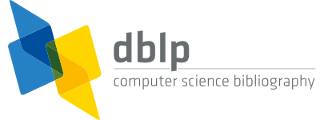


default search action
SIGCSE 1991: San Antonio, Texas, USA
- Nell B. Dale:

Proceedings of the 22nd SIGCSE Technical Symposium on Computer Science Education, SIGCSE 1991, San Antonio, Texas, USA, March 7-8, 1991. ACM 1991, ISBN 0-89791-377-9 - August E. Sapega:

Introducing undergraduate engineering students to laboratory automation using high-level application programs. 1-5 - James Robergé, Candice Suriano:

Embedding laboratories within the computer science curriculum. 6-10 - Edward C. Epp:

An experimental computer science laboratory. 11-14 - William A. Shay:

A software project for a data communication course. 15-20 - Paul T. Tymann:

VNET: a tool for teaching computer networking to undergraduates. 21-24 - Chris McDonald:

A network specification language and execution environment for undergraduate teaching. 25-34 - Rockford J. Ross:

Experience with the DYNAMOD program animator. 35-42 - Susan R. Wallace, F. Layne Wallace:

Two neural network programming assignments using arrays. 43-47 - Elizabeth E. Katz, Hayden S. Porter:

HyperTalk as an overture to CS1. 48-54 - Jane M. Fritz:

HyperCard applications for teaching information systems. 55-61 - Mary J. Granger, Roger Alan Pick:

The impact of computer-aided software engineering on student performance. 62-72 - Mark Temte:

Let's begin introducing the object-oriented paradigm. 73-77 - David Arnow:

The Iliad and the WHILE loop: computer literacy in a liberal arts program. 78-81 - Robert Geitz:

Algorithms and images: computer graphics as an introduction to science. 82-86 - William J. Taffe:

Simulation and modelling with Stella: a general education course. 87-91 - David Jackson:

A mini-course on concurrency. 92-96 - Janet Hartman, Dean Sanders:

Teaching a course in parallel processing with limited resources. 97-101 - Allan L. Fisher, Thomas R. Gross:

Teaching the programming of parallel computers. 102-107 - Evan Golub, Moshe Augenstein:

Creation of a new case for LUPSort: ALTERNATING. 108-111 - Owen L. Astrachan:

Pictures as invariants. 112-118 - Tom Whaley:

A framework for program verification in the context of linked structures and pointer variables. 119-123 - Vicki L. Almstrum:

The relationship between pre-college mathematics and the undergraduate computer science curricula. 124-129 - Thomas J. Scott:

Mathematics and computer science at odds over real numbers. 130-139 - Gary Haggard:

A project for data structures and algorithms. 140-145 - Debra A. Lelewer, Cheng Ng:

An honors course in data compression. 146-150 - Richard Johnsonbaugh, Martin Kalin:

A graph generation software package. 151-154 - Dorian P. Yeager:

Teaching concurrency in the programming languages course. 155-161 - Barry L. Kurtz:

Laboratory activities for studying the formal semantics of programming languages. 162-168 - Barry L. Kurtz, Richard L. Oliver, Edward M. Collins:

The design, implementation, and use of DSTutor: a tutoring system for denotational semantics. 169-177 - Ken Slonneger:

An exercise in denotational semantics. 178-183 - Yuksel Uckan:

Integrating logic programming into a data base course: views as rules in deductive relational data bases. 184-191 - Hossein Saiedian

 , Hassan Farhat:
, Hassan Farhat:
A team-oriented, project-intensive database course. 192-198 - Louis A. Foster, Norman L. Hughes:

Making files real with a virtual disk. 199-204 - Linda H. Pesante:

Integrating writing into computer science courses. 205-209 - James C. McKim, Timothy O. Martyn, Roger H. Brown, Michael M. Danchak, Kathleen L. Farrell, C. William Higginbotham, Irina Ilovic, Brian J. McCartin, J. Peter Matelski:

An alternative culminating experience for master's students in computer science. 210-218 - Amos O. Olagunju:

The plight of a minority in computer science: an educational manifesto. 219-225 - John Motil:

Begin-BIG an approach to the introductory computing course. 226-230 - Suzanne Skublics, Paul White:

Teaching Smalltalk as a first programming language. 231-234 - Gary H. Locklair:

The introductory computer science course. 235-239 - Jane C. Hill, Andrew Wayne:

A CYK approach to parsing in parallel: a case study. 240-245 - Ahmad Ghafarian:

An experimental approach to a course on parallel and distributed algorithms. 246-253 - Robert M. Harlan:

Searching in parallel: a case study with the single-source shortest path algorithm. 254-259 - John A. McCormick:

A laboratory for teaching the development of real-time software systems. 260-264 - Carl Steidley:

Robotics: a closer look at microprocessor systems. 265-272 - Wayne D. Smith:

The design of an inexpensive undergraduate data communications laboratory. 273-276 - Frances K. Bailie:

Improving the modularization ability of novice programmers. 277-282 - Ann E. Fleury:

Parameter passing: the rules the students construct. 283-286 - Darrah Chavey:

A structured laboratory component for the introductory programming course. 287-295 - Joseph M. Clifton:

An industry approach to the software engineering course. 296-299 - James E. Tomayko:

Teaching software development in a studio environment. 300-303 - C. William Higginbotham, Ralph A. Morelli:

A system for teaching concurrent programming. 309-316 - Ted Mims, Andrzej Hoppe:

Utilizing a transputer laboratory and Occam2 in an undergraduate operating systems course. 317-323 - John M. Jeffrey:

Using Petri nets to introduce operating system concepts. 324-329 - Steve Cunningham:

User interface programming: a human-computer communication course for computer science. 330-336 - James L. Silver:

Using Ada to specify and evaluate projects in a data structures course. 337-340 - Greg W. Scragg:

Most computer organization courses are built upside down. 341-346 - Dale Skrien, John Hosack:

A multilevel simulator at the register transfer level for use in an introductory machine organization class. 347-351 - David Doss, Bill E. Swafford:

Networking non-network applications. 352-357 - William J. Collins:

Estimating execution times: a laboratory exercise for CS2. 358-363 - Gary Ford:

The SEI undergraduate curriculum in software engineering. 375-385

manage site settings
To protect your privacy, all features that rely on external API calls from your browser are turned off by default. You need to opt-in for them to become active. All settings here will be stored as cookies with your web browser. For more information see our F.A.Q.


 Google
Google Google Scholar
Google Scholar Semantic Scholar
Semantic Scholar Internet Archive Scholar
Internet Archive Scholar CiteSeerX
CiteSeerX ORCID
ORCID
















